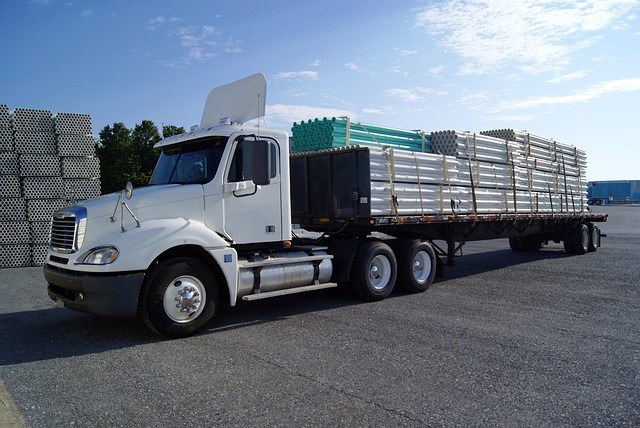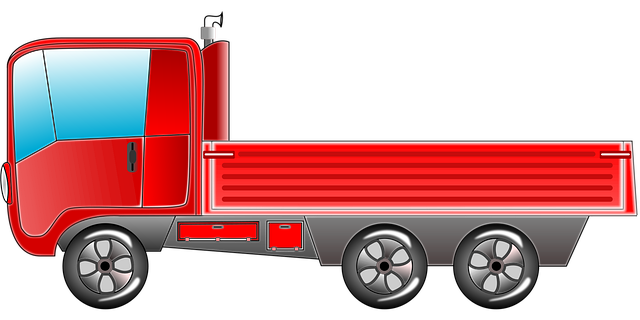Looking to register your car in California? This comprehensive guide walks you through every step, from understanding the requirements to receiving your official California vehicle registration. First, grasp what’s needed for car registration in CA, including DMV VIN verification. Then, gather essential documents and visit your local DMV office. Follow our simple steps for a smooth process, ensuring you complete the application and pay fees accurately. Soon, you’ll have your CA vehicle registration papers in hand.
- Understand Requirements for Car Registration in California
- Gather Necessary Documents for Vehicle Registration
- Visit Your Local DMV: Steps for Vin Verification
- Complete Application and Pay Registration Fees
- Receive Your California Vehicle Registration Papers
Understand Requirements for Car Registration in California

Before you begin the registration process, it’s crucial to understand what’s required for car registration in California. The state Department of Motor Vehicles (DMV) has strict guidelines that all vehicle owners must meet. One of the primary steps is ensuring your car has a valid and accurate Vehicle Identification Number (VIN). This unique 17-character code acts as a fingerprint for your vehicle, providing critical information about its make, model, year, and other specifications.
A key part of the registration process involves a DMV VIN verification to ensure the number is legitimate and matches the vehicle’s records. For added convenience, many Californians opt for a mobile VIN inspection or verification service, allowing them to complete this step from the comfort of their homes or offices. This streamlined approach not only saves time but also contributes to a smoother registration experience overall.
Gather Necessary Documents for Vehicle Registration

Before heading to the California Department of Motor Vehicles (DMV) to register your car, make sure you have all the required documents. The process typically requires several key pieces of information and verifications. One crucial step is completing a DMV vehicle history report, which involves a dmv vin verification—a process that checks the vehicle’s unique identification number (VIN) against its historical records to ensure it hasn’t been reported stolen or had significant damage. This can be done online or in-person.
Additionally, you’ll need proof of insurance, a valid driver’s license, and possibly a title certificate from the previous owner. Some states allow for a mobile vin verification service, where an app or tool helps streamline the process by checking the VIN digitally. Alternatively, a vin inspection done at a trusted mechanic can also assist in ensuring your car meets all necessary safety standards before registration.
Visit Your Local DMV: Steps for Vin Verification

To begin the process of registering your car in California, start by visiting your local Department of Motor Vehicles (DMV) office. The DMV is responsible for handling vehicle registration and title services within the state. Upon arrival, locate the specific counter or area dedicated to registration services. One crucial step during this process is the Vehicle Identification Number (VIN) verification.
During the VIN verification, a DMV officer will inspect your car to ensure it matches the information on the registration documents. This includes checking the VIN plate, which is typically located on the vehicle’s chassis, and confirming it aligns with the details in their system. If you have recently purchased a used vehicle, you might opt for a mobile VIN inspection or verification service to streamline this step. These services provide convenience by allowing the inspection to be conducted at your location, saving you a trip to the DMV.
Complete Application and Pay Registration Fees

After gathering all necessary documents and ensuring your vehicle meets California’s requirements, it’s time to complete the registration process at the DMV. This involves filling out a Vehicle Registration Application, which includes important details like your personal information, vehicle specifications, and the current odometer reading. Make sure to double-check for any errors as these can delay the registration process.
Once the application is correctly completed, you’ll be required to pay the appropriate registration fees. These fees vary based on several factors, including the type of vehicle and its age. As part of this step, don’t forget to undergo a DMV VIN verification, which is crucial for ensuring that your vehicle’s identification number (VIN) is valid and matches the details in the registration process. You can facilitate this process with a mobile VIN verifier or conduct a VIN inspection yourself to streamline the registration procedure.
Receive Your California Vehicle Registration Papers

After submitting your application for vehicle registration at the California DMV (Department of Motor Vehicles), you’ll receive your California Vehicle Registration Papers. This official document confirms that your car is legally registered and authorized to operate on California roads. Before using your vehicle, ensure you have all the necessary paperwork in order.
One crucial step involves completing a DMV VIN (Vehicle Identification Number) verification process, which can be done through a mobile vin verifier or by scheduling a mobile vin inspection. This step ensures the accuracy of your car’s information and complies with California’s registration requirements. By having these documents ready, you’ll streamline the registration process and avoid any potential delays when hitting the open road in your newly registered vehicle.
Registering a car in California is a straightforward process, but understanding the requirements and gathering the necessary documents are key. After completing the DMV’s VIN verification, filling out the application, and paying the registration fees, you’ll receive your official California vehicle registration papers, ensuring your vehicle complies with state laws and enabling smooth operation on California roads.
